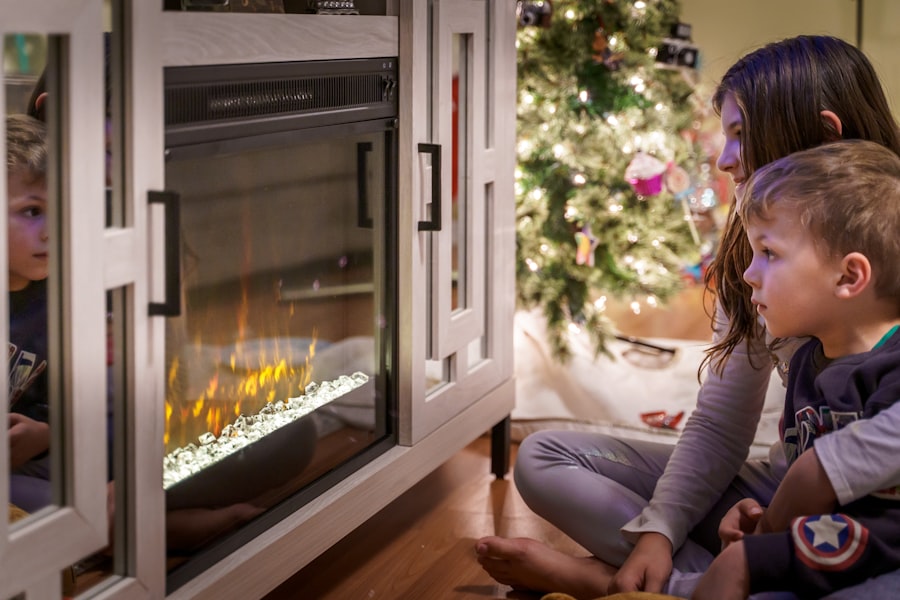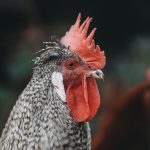Chickens are generally hardy birds with good cold tolerance, but their limits vary by breed. Cold-hardy breeds like Rhode Island Red, Orpington, and Wyandotte can withstand lower temperatures better than more sensitive breeds such as Silkie and Serama. Understanding the cold tolerance of specific chicken breeds is essential for proper winter care.
Chickens’ ability to tolerate cold temperatures is due to their insulating layer of feathers, which traps body heat. Their higher body temperature, typically 105-107 degrees Fahrenheit, also helps them stay warm in cold weather. However, when temperatures drop below freezing, chickens risk frostbite on their combs, wattles, and feet.
It’s crucial to monitor weather conditions and take appropriate measures to protect chickens from extreme cold. Understanding chickens’ cold tolerance and thermoregulation capabilities allows for better preparation in providing a warm, comfortable indoor environment during winter months.
Table of Contents
- 1 Creating a warm and comfortable indoor environment for chickens
- 2 Providing appropriate lighting for indoor chickens
- 3 Ensuring proper ventilation for indoor chickens
- 4 Offering a balanced diet for indoor chickens during cold weather
- 5 Monitoring the health and behavior of indoor chickens
- 6 Preparing for the transition back to outdoor living
- 7 FAQs
Key Takeaways
- Chickens have a natural cold tolerance, but it varies by breed and age
- Providing a warm and comfortable indoor environment is crucial for chickens during cold weather
- Proper lighting is important for maintaining the health and egg production of indoor chickens
- Good ventilation is essential to prevent moisture buildup and respiratory issues in indoor chickens
- A balanced diet with extra protein and energy is necessary for indoor chickens during cold weather
- Regular monitoring of health and behavior is important to catch any issues early
- Gradually acclimate chickens to outdoor living to prevent stress and health problems
Creating a warm and comfortable indoor environment for chickens
Insulation: The Key to a Cozy Coop
Proper insulation in the chicken coop helps to retain heat and prevent drafts, keeping the interior temperature at a comfortable level for the birds. This can be achieved by using materials like straw, hay, or wood shavings on the coop floor, as well as insulating the walls and ceiling with foam boards or other insulating materials.
Providing a Heat Source
In addition to insulation, providing a heat source in the chicken coop can help to keep the birds warm during cold weather. This can be accomplished with the use of heat lamps, heated pads, or radiant heaters. It’s crucial to place the heat source in a safe location where it won’t pose a fire hazard or cause overheating.
Maintaining a Comfortable Temperature
The temperature in the coop should be kept above freezing, ideally around 50-60 degrees Fahrenheit, to ensure the chickens stay comfortable and healthy. By creating a warm and comfortable indoor environment for your chickens, you can help them stay safe and happy during the winter months.
Providing appropriate lighting for indoor chickens

During the winter months, daylight hours are shorter, which can have an impact on egg production in chickens. To help maintain egg production and keep your chickens healthy, it’s important to provide appropriate lighting in their indoor environment. Supplemental lighting can be used to extend the daylight hours for chickens, mimicking the longer days of summer and encouraging consistent egg laying.
This can be achieved by installing artificial lights on a timer in the chicken coop, providing around 14-16 hours of light per day. It’s important to use low-wattage bulbs to avoid overheating and to place the lights at a safe distance from flammable materials. Additionally, it’s crucial to allow for periods of darkness to give the chickens time to rest and maintain their natural circadian rhythms.
By providing appropriate lighting for indoor chickens, you can help them maintain healthy egg production and overall well-being during the winter months.
Ensuring proper ventilation for indoor chickens
While it’s important to keep the chicken coop warm during cold weather, it’s equally important to ensure proper ventilation to maintain air quality and prevent moisture buildup. Poor ventilation can lead to respiratory issues and other health problems in chickens, so it’s crucial to strike a balance between warmth and fresh air circulation. Ventilation openings should be positioned high up on the walls of the coop to allow for the escape of moisture and ammonia from droppings, while preventing drafts that could chill the birds.
In addition to natural ventilation, supplemental ventilation such as exhaust fans or vents can be used to improve air circulation in the coop. It’s important to regularly check ventilation openings for blockages caused by snow or ice buildup and to clear them as needed. By ensuring proper ventilation for indoor chickens, you can help maintain good air quality and prevent respiratory issues during the winter months.
Offering a balanced diet for indoor chickens during cold weather
During the winter months, it’s important to provide your indoor chickens with a balanced diet that meets their nutritional needs and helps them stay healthy and productive. Cold weather can increase the energy requirements of chickens as they work to maintain body temperature, so it’s important to adjust their diet accordingly. A balanced diet for indoor chickens during cold weather should include high-quality layer feed that provides essential nutrients like protein, vitamins, and minerals.
In addition to layer feed, offering supplemental treats like scratch grains, mealworms, fruits, and vegetables can help keep chickens entertained and provide extra energy during colder months. It’s also important to ensure access to clean water at all times, as hydration is crucial for overall health and egg production. By offering a balanced diet for indoor chickens during cold weather, you can help them stay healthy and maintain consistent egg production throughout the winter months.
Monitoring the health and behavior of indoor chickens

Health Risks in Cold Weather
Cold weather can put stress on chickens, making them more susceptible to health issues like respiratory infections or frostbite. Regularly checking on your chickens for signs of illness or distress is crucial in catching any problems early and providing prompt care.
Monitoring Behavioral Cues
In addition to physical health, monitoring the behavior of your indoor chickens can provide valuable insight into their well-being. Signs of stress or discomfort in chickens may include decreased activity, changes in eating or drinking habits, or unusual vocalizations.
Addressing Issues and Ensuring Well-being
By paying attention to these behavioral cues, you can address any issues that may arise and ensure your indoor chickens are thriving during the winter months.
Preparing for the transition back to outdoor living
As the weather begins to warm up in the spring, it’s important to prepare your indoor chickens for the transition back to outdoor living. Gradually acclimating them to outdoor temperatures and conditions can help prevent stress and health issues as they adjust to their natural environment. This can be achieved by gradually increasing their time spent outdoors each day over a period of several weeks.
It’s also important to ensure that outdoor areas like the chicken run are clean, secure, and free from hazards before allowing your chickens back outside. This includes checking for any damage caused by winter weather, removing debris or obstructions, and ensuring that fencing is intact to prevent predators from accessing the outdoor space. By preparing for the transition back to outdoor living, you can help your chickens safely and comfortably return to their natural environment as the weather warms up.
In conclusion, understanding the cold tolerance of chickens is crucial in providing them with proper care during the winter months. Creating a warm and comfortable indoor environment, providing appropriate lighting, ensuring proper ventilation, offering a balanced diet, monitoring health and behavior, and preparing for the transition back to outdoor living are all essential aspects of winter chicken care. By taking these measures, you can help your indoor chickens stay healthy and happy throughout the colder months and ensure a smooth transition back to outdoor living when spring arrives.
If you’re looking for tips on how to keep your chickens warm during the cold weather, you might want to check out this article on how to insulate a chicken coop. It provides valuable information on how to properly insulate your coop to keep your chickens comfortable and safe during the winter months.
FAQs
Why should I keep chickens inside when it’s cold?
Keeping chickens inside when it’s cold helps to protect them from extreme temperatures, frostbite, and other cold-related health issues. It also helps to ensure that they have access to food and water without it freezing.
What temperature is too cold for chickens?
Chickens can handle cold temperatures quite well, but they are susceptible to frostbite and other cold-related health issues when temperatures drop below freezing (32°F or 0°C). It’s important to monitor the temperature and the condition of your chickens to determine when it’s time to bring them inside.
How can I keep my chickens warm inside?
You can keep your chickens warm inside by providing them with a well-insulated coop, plenty of bedding, and a heat source such as a heat lamp or a heated pad. It’s important to ensure that the coop is well-ventilated to prevent moisture buildup.
What are the signs that my chickens are too cold?
Signs that your chickens are too cold include shivering, huddling together for warmth, decreased egg production, pale combs and wattles, and lethargy. It’s important to monitor your chickens closely for these signs and take action to keep them warm.
Can chickens handle cold weather if they have a heated coop?
Chickens can handle cold weather with a heated coop, but it’s important to ensure that the coop is well-insulated and that the heat source is safe and reliable. It’s also important to monitor the temperature inside the coop to ensure that it stays within a safe range for the chickens.
Meet Walter, the feathered-friend fanatic of Florida! Nestled in the sunshine state, Walter struts through life with his feathered companions, clucking his way to happiness. With a coop that’s fancier than a five-star hotel, he’s the Don Juan of the chicken world. When he’s not teaching his hens to do the cha-cha, you’ll find him in a heated debate with his prized rooster, Sir Clucks-a-Lot. Walter’s poultry passion is no yolk; he’s the sunny-side-up guy you never knew you needed in your flock of friends!







